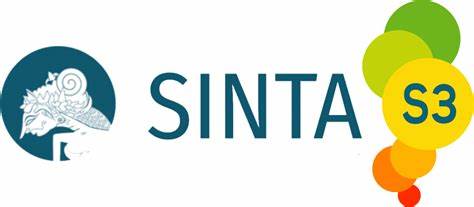EXTEMPORANEOUS SPEECH TECHNIQUE: EXPLORING ITS IMPLEMENTATION AND STUDENTS’ EXPERIENCES
Keywords:
Anxiety in English Language Learning, Extemporaneous Speech Technique, Students’ AnxietyAbstract
Speech anxiety continues to be a prevalent issue in EFL learners’ oral communication. The extemporaneous speech technique has been suggested as an effective method to enhance fluency and alleviate anxiety. Nevertheless, limited research has explored how this technique is applied in actual classroom settings and how students perceive its effectiveness. This study focuses on exploring the use of extemporaneous technique as well as students’ experiences regarding the extemporaneous technique. Employing a qualitative approach with a case study design, the researcher employed participatory observation and semi-structured interview. The study included twenty students for class observation and six eleventh-grade students for interviews. The findings revealed that applying the extemporaneous speech technique through three stages such as preparation, delivery, and reflection. In addition, it was also revealed that students’ experiences showed that this technique reduced their anxiety, enhanced engagement, and built self-confidence; however, they still faced challenges such as organizing ideas, outlining key points, and handling unfamiliar vocabulary. To overcome these difficulties, students applied strategies including thorough preparation, effective note-taking, and consistent practice, which helped them improve speech coherence and confidence. These results highlight the pedagogical value of integrating extemporaneous speaking into EFL instruction to foster students’ oral confidence and lower speech anxiety.
References
Assaf, L., & Yunus, M. M. (2020). The effects of extemporaneous speaking activities on students’ oral communication competence. Journal of Language and Linguistic Studies, 16(3), 1456–1470. https://doi.org/10.17263/jlls.803418
Bygate, M. (1987). Speaking. Oxford University Press.
Daly, J. A. (1991). Understanding communication apprehension: An introduction for language educators. In E. K. Horwitz & D. J. Young (Eds.), Language anxiety: From theory and research to classroom implications (pp. 3–13). Prentice Hall.
Geduriagao, A. M., & Vibal, M. C. (2025). Extemporaneous speaking skills and academic performance among senior high school students. Asian Journal of Education and Social Studies, 10(2), 88–97.
Gregersen, T., & Horwitz, E. K. (2002). Language learning and perfectionism: Anxious and non-anxious learners’ reactions to their own oral performance. The Modern Language Journal, 86(4), 562–570. https://doi.org/10.1111/1540-4781.00161
Greene, J. O. (1984). A cognitive approach to human communication: An action assembly theory. Communication Monographs, 51(4), 289–306. https://doi.org/10.1080/03637758409390202
Gustianing, A., Rahayu, D., & Pratama, F. (2024). The impact of extemporaneous speaking on students’ fluency and engagement in EFL classrooms. Indonesian Journal of English Language Teaching and Applied Linguistics, 9(1), 15–28. https://doi.org/10.21093/ijeltal.v9i1
Horwitz, E. K., Horwitz, M. B., & Cope, J. (1986). Foreign language classroom anxiety. The Modern Language Journal, 70(2), 125–132. https://doi.org/10.1111/j.1540-4781.1986.tb05256.x
Krashen, S. D. (1982). Principles and practice in second language acquisition. Pergamon Press.
Liu, M. (2006). Anxiety in Chinese EFL students at different proficiency levels. System, 34(3), 301–316. https://doi.org/10.1016/j.system.2006.04.004
MacIntyre, P. D., & Gardner, R. C. (1991). Methods and results in the study of anxiety and language learning: A review of the literature. Language Learning, 41(1), 85–117. https://doi.org/10.1111/j.1467-1770.1991.tb00677.x
McCroskey, J. C. (1977). Oral communication apprehension: A summary of recent theory and research. Human Communication Research, 4(1), 78–96. https://doi.org/10.1111/j.1468-2958.1977.tb00599.x
McCroskey, J. C. (2006). An introduction to rhetorical communication: A Western rhetorical perspective. Pearson Education.
Miftakh, F., Rachmawati, D., & Pratiwi, L. (2023). EFL learners’ speaking anxiety and classroom participation: A case from Indonesian higher education. Journal of English Language Education, 8(2), 45–57.
Miles, M. B., & Huberman, A. M. (1994). Qualitative data analysis: An expanded sourcebook (2nd ed.). Sage Publications.
Mohammed, H. (2022). The impact of foreign language anxiety on students’ performance in EFL classes. Arab World English Journal, 13(1), 293–307. https://doi.org/10.24093/awej/vol13no1.19
Nikitina, L. (2011). Successful public speaking. Petaling Jaya: Pearson Malaysia.
Pabro-Maquidato, I. M. (2021). Extemporaneous speaking: An intervention to enhance students’ public speaking skills. International Journal of English Language Studies, 3(2), 1–8. https://doi.org/10.32996/ijels.2021.3.2.1
Salah, N. A., & Kamariah, A. B. (2021). Extemporaneous speaking and its influence on EFL learners’ oral proficiency. International Journal of Education and Literacy Studies, 9(4), 80–89. https://doi.org/10.7575/aiac.ijels.v.9n.4p.80
Schwartzman, R. (2007). Fundamentals of extemporaneous speaking. In Public Speaking Handbook (pp. 203–221). Pearson Education.
Simonds, C. J., & Cooper, P. J. (2011). Communication for the classroom teacher (9th ed.). Pearson.
Sweller, J. (1988). Cognitive load during problem solving: Effects on learning. Cognitive Science, 12(2), 257–285. https://doi.org/10.1207/s15516709cog1202_4
Tsang, A. (2020). The impact of anxiety on EFL oral performance: Extemporaneous versus prepared speaking tasks. System, 94, 102–325. https://doi.org/10.1016/j.system.2020.102325
Yin, R. K. (2018). Case study research and applications: Design and methods (6th ed.). SAGE Publications.
Young, D. J. (1991). Creating a low-anxiety classroom environment: What does language anxiety research suggest? The Modern Language Journal, 75(4), 426–439. https://doi.org/10.1111/j.1540-4781.1991.tb05378.x
Yulanda, N. (2021). Teaching extemporaneous speaking to EFL learners: Pedagogical approaches and challenges. Journal of English Language Teaching Innovations, 4(2), 110–121.
Zhang, R., & Zhong, J. (2012). The hindrance of doubt: Causes of language anxiety. International Journal of English Linguistics, 2(3), 27–33. https://doi.org/10.5539/ijel.v2n3p27
Downloads
Published
Issue
Section
License

This work is licensed under a Creative Commons Attribution-ShareAlike 4.0 International License.
The author is responsible for acquiring the permission(s) to reproduce any copyrighted figures, tables, data, or text that are being used in the submitted paper. Authors should note that text quotations of more than 250 words from a published or copyrighted work will require grant of permission from the original publisher to reprint. The written permission letter(s) must be submitted together with the manuscript.




